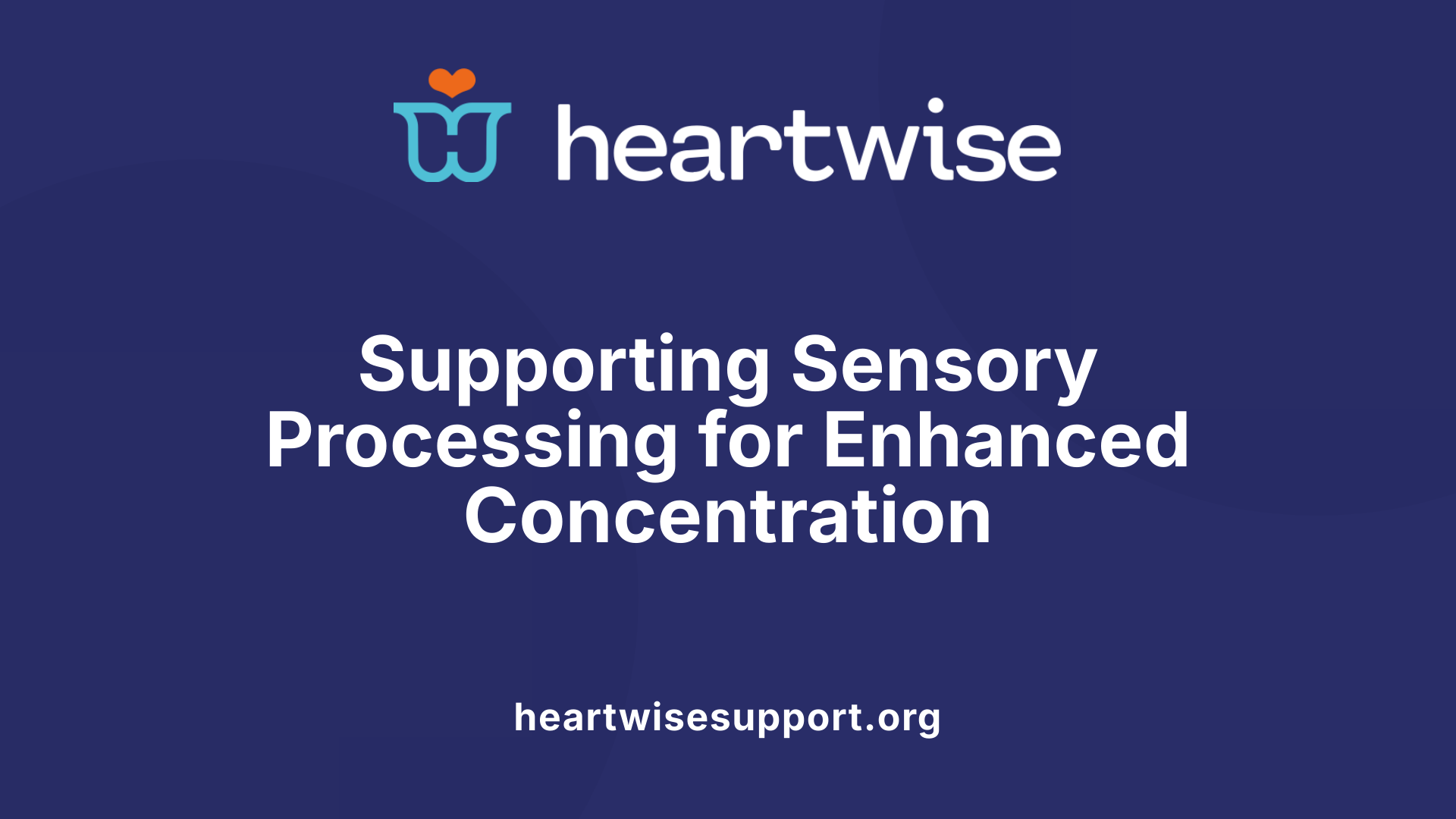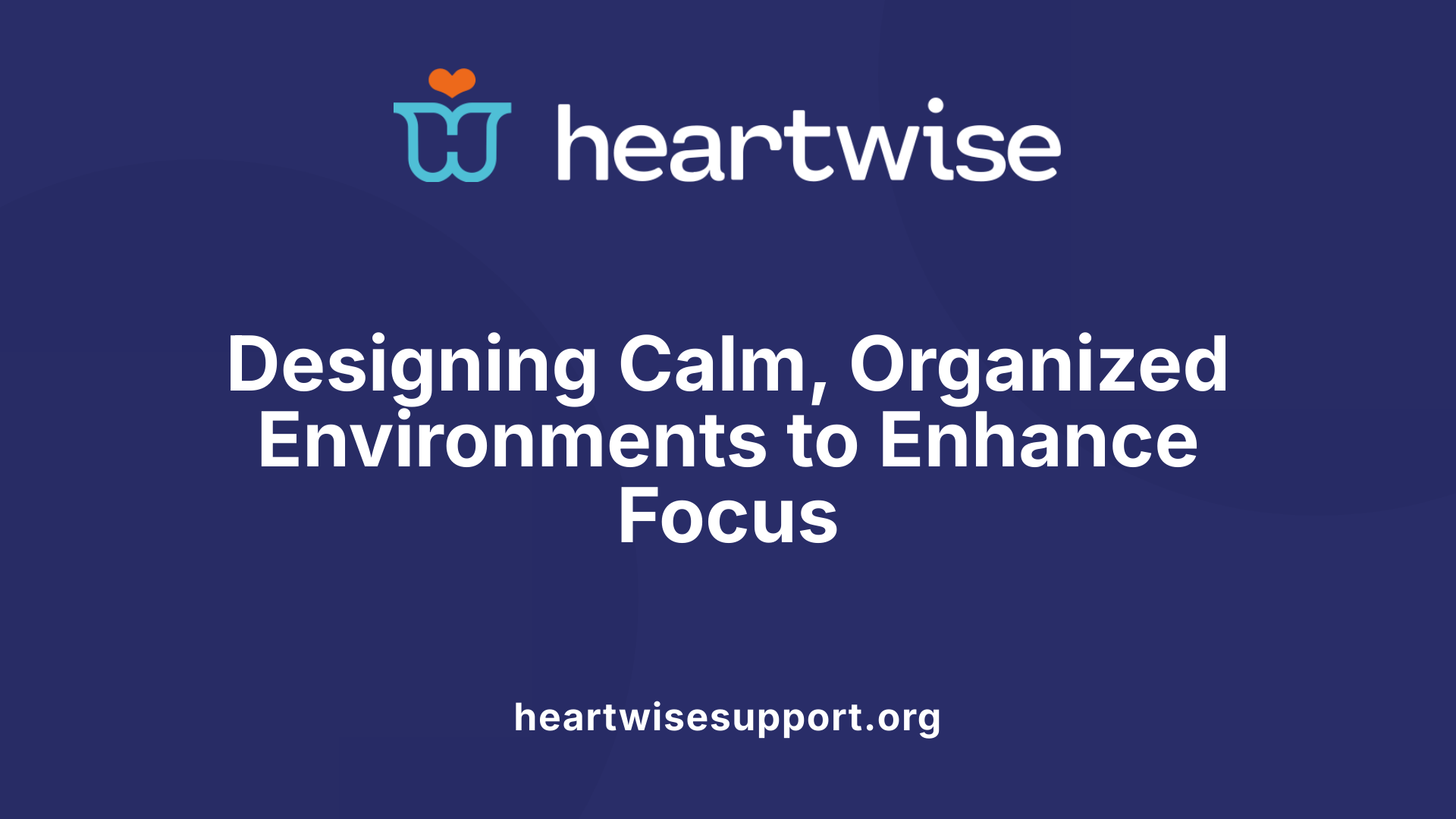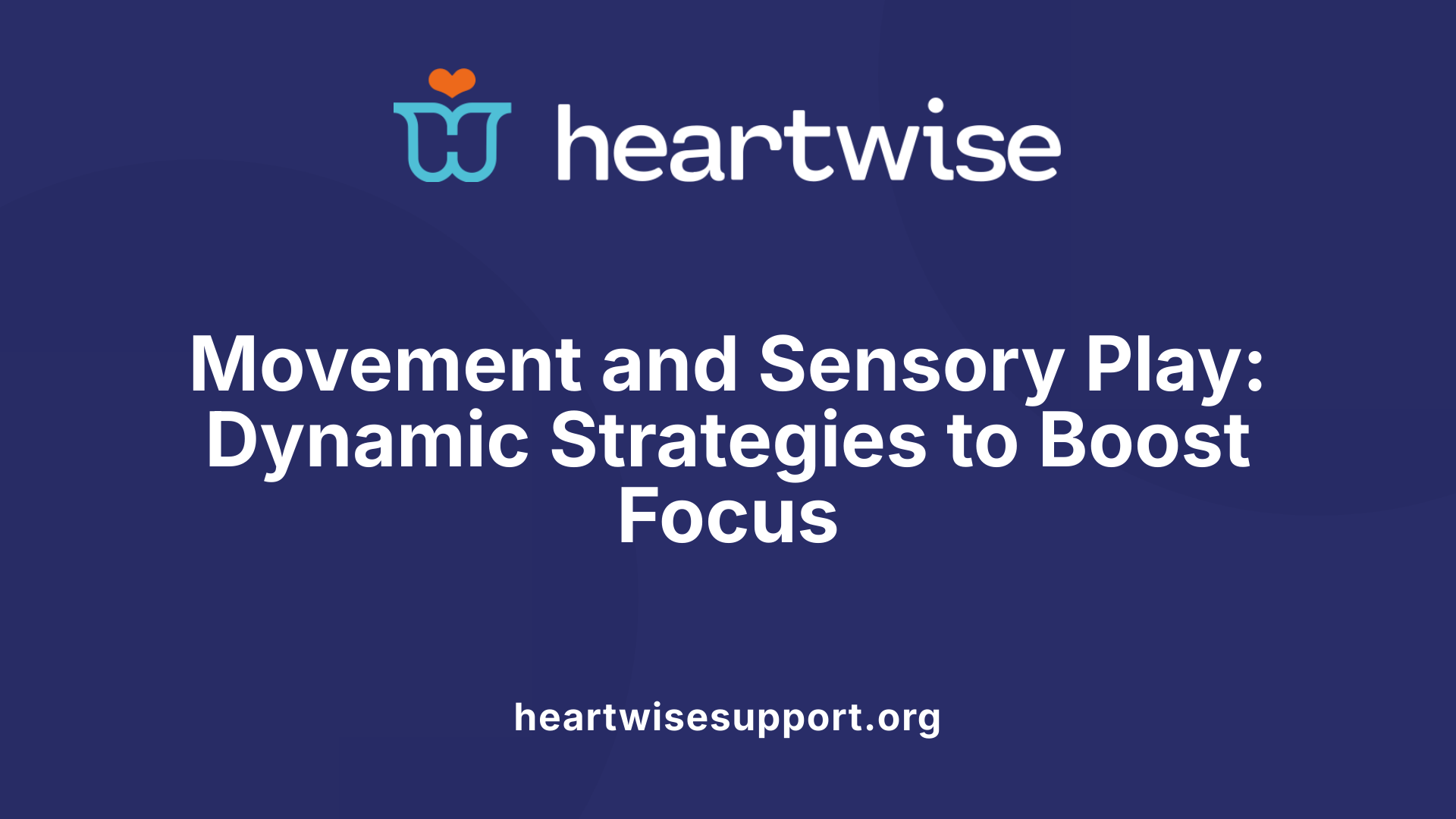Understanding the Role of ABA in Supporting Attention
Applied Behavior Analysis (ABA) is a scientifically validated approach for improving focus, attention, and social skills in children with autism spectrum disorder (ASD) and Attention Deficit Hyperactivity Disorder (ADHD). Its individualized, structured strategies are designed to modify behaviors positively, fostering greater engagement and self-control. This article explores how ABA techniques can be effectively used to enhance attention skills, the specific strategies involved, the evidence supporting its effectiveness, and practical ways for parents and educators to implement these approaches.
How ABA Therapy Can Improve Focus and Attention
How can ABA therapy improve focus and attention in children with autism or ADHD?
Applied Behavior Analysis (ABA) offers effective strategies to help children with autism and ADHD increase their focus and attention. This approach relies on structured, reinforcement-based techniques that encourage positive behavioral changes.
One of the core methods used in ABA is task analysis. This involves breaking down complex activities into smaller, manageable steps. By focusing on one step at a time, children are less likely to become overwhelmed, making it easier to concentrate and gradually build their attention span.
For example, a child learning to brush their teeth might start with just holding the toothbrush, then move to applying toothpaste, and finally brushing. Each step is reinforced with praise or tangible rewards, which motivates the child to complete the task and stay attentive.
In addition, reinforcement techniques such as immediate praise or tokens are used to encourage desired behaviors, including sustained attention and following instructions. Differential reinforcement helps highlight specific attentive behaviors by rewarding only those actions that demonstrate focus.
Self-monitoring is another important element in ABA. Children are taught to recognize when their attention lapses and to use strategies like pausing or asking for help. This promotes awareness and self-control, which are vital for maintaining focus over time.
Environmental modifications also play a crucial role. Creating predictable routines and using visual aids provide structure that reduces distractions. For example, consistent daily schedules and designated activity areas help children know what to expect, which can significantly improve their ability to stay engaged.
Incorporating physical and sensory activities into routines—such as movement breaks or sensory play—can re-energize children and foster sustained attention. Including sensory-friendly tools like noise-canceling headphones or weighted blankets can help regulate sensory input, especially for children with sensory processing challenges.
Overall, the personalized and goal-oriented nature of ABA allows therapists and parents to tailor interventions. This ensures that strategies are aligned with each child's needs, promoting improvements in focus, self-control, and social interaction.
In summary, ABA therapy enhances attention in children with autism and ADHD through:
| Technique | Description | Benefits |
|---|---|---|
| Task analysis | Breaking tasks into small steps | Reduces overwhelm, improves focus |
| Reinforcement | Providing praise or rewards | Motivates attention, encourages persistence |
| Self-monitoring | Recognizing lapses and adjusting | Builds self-awareness and control |
| Environmental adjustments | Routine setting and visual cues | Creates predictable, distraction-free space |
| Sensory strategies | Using sensory tools and breaks | Regulates sensory input for better attention |
By combining these strategies, ABA empowers children to develop stronger attention skills that support learning and daily life.
What specific strategies are used in ABA to foster attention skills?
| Strategy | Description | Example Activities | |---|---|---| | Visual aids | Charts, schedules, pictorial prompts | Daily routine charts, picture-based instructions | | Clear instructions | Concise, step-by-step directions |
Empirical Evidence Supporting ABA's Effectiveness in Attention Enhancement
Is ABA therapy effective in improving attention-related behaviors?
Recent research supports the effectiveness of Applied Behavior Analysis (ABA) in enhancing attention and related skills in children with autism spectrum disorder (ASD) and Attention Deficit Hyperactivity Disorder (ADHD). Multiple studies and meta-analyses have demonstrated that ABA interventions can lead to significant improvements in attention span, focus, and self-control.
In controlled experiments, children receiving ABA therapy showed marked increases in their ability to sustain attention during tasks. For example, a study involving a structured ABA program over several weeks reported that children could focus for longer periods and exhibited fewer disruptive behaviors that interfere with learning.
In addition to boosting attention, ABA has been shown to diminish distractibility—the tendency to become easily sidetracked by irrelevant stimuli—and reduce stereotypical or repetitive behaviors that often distract from relevant tasks. This reduction allows children to better engage with their environment and absorb new information.
Furthermore, children undergoing ABA programs often exhibit improvements in social skills, communication, and overall adaptive behaviors. Techniques such as positive reinforcement, task breakdowns, and prompting teach children self-regulation strategies, leading to better impulse control. As children learn to pause and think before acting, their ability to focus improves noticeably.
Research from multiple sources reveals that these benefits are consistent across diverse settings and are reinforced by meta-analytical reviews of multiple studies. These comprehensive analyses confirm that ABA not only helps manage behavioral challenges but also enhances core attention-related capabilities.
Summary data from a recent clinical trial shows that after six weeks of ABA intervention, children exhibited significant increases in attention scores on standardized assessments, with effect sizes indicating large improvements. Similar findings are echoed in the literature, emphasizing that ABA is a validated and effective approach for addressing attention deficits.
In conclusion, existing scientific evidence affirms that ABA therapy is a proven method to improve attention, help manage distractibility, and foster self-control. These outcomes are essential for supporting children’s learning, social development, and overall functionality.
Research support for ABA in attention improvement:
| Study Type | Focus Area | Significant Findings | Additional Notes |
|---|---|---|---|
| Controlled trial | Attention span | Increased focus duration in children post-ABA intervention | Demonstrates causality |
| Meta-analysis | Behavioral reduction | Reduction in stereotypical and disruptive behaviors | Supports broad efficacy |
| Longitudinal studies | Social skills | Improvements in social interactions and communication | Highlights holistic benefits |
| Experimental group vs. control | Adaptive behaviors | Notable gains in daily functioning and self-control | Reinforces importance of early and targeted therapy |
Overall, the accumulating scientific evidence confirms that ABA is a robust, evidence-based approach for boosting attention and reducing behaviors that hinder focus in children with ASD and ADHD.
Specific ABA Techniques for Enhancing Attention and Focus
What are some specific ABA techniques for enhancing focus and attention?
Applied Behavior Analysis (ABA) offers a variety of tailored strategies that can significantly improve attention and focus in children with ADHD and autism. One of the fundamental techniques is task analysis, where activities are broken down into small, manageable parts. This helps children focus on one step at a time, reducing overwhelm and encouraging sustained attention.
Visual aids and schedules are also commonly used. These visual tools serve as clear cues that guide children through their daily routines or specific tasks, which can minimize distractions and foster independence. For example, picture schedules help children anticipate what comes next, providing a sense of predictability and control.
Reinforcement strategies are central to ABA. Techniques like token economies and praise are used to motivate children to stay attentive. When a child successfully focuses on an activity or completes a component, they receive tokens, praise, or other rewards. This positive feedback reinforces attentive behaviors and increases the likelihood of their recurrence.
Other effective techniques include contingency observation and pivotal response treatment. Contingency observation involves waiting for desired behaviors to occur naturally and then reinforcing them, which encourages children to engage more actively. Pivotal response treatment focuses on increasing motivation and social engagement, which has an indirect but powerful effect on attention by making activities more appealing.
Together, these methods create a comprehensive approach that enhances focus, reduces distractibility, and builds longer attention spans over time. When combined with other therapies or educational strategies, ABA can help children develop crucial skills for learning and social interaction.
Implementing ABA Strategies to Foster Attention and Joint Attention Skills in Daily Life
How can parents and educators implement ABA strategies to foster attention and joint attention skills?
Applying ABA techniques in everyday settings requires consistency, patience, and strategic planning. Parents and educators play a vital role in shaping these skills by using reinforcement and modeling to guide children.
One effective approach is to use positive reinforcement, which involves praising or rewarding children immediately when they demonstrate attentive or joint attention behaviors. For example, if a child makes eye contact while a parent points at an object, praise or a reward can reinforce this response. Modeling behaviors, such as pointing, showing, or speaking about objects, provides children with clear examples to imitate.
Structured routines are essential in creating predictability, which helps children understand expectations and engage more readily. Incorporating turn-taking games, reading sessions, or shared play activities encourages children to focus on the same activity with others, promoting social connection and shared attention.
Activities that involve following gaze or gestures are particularly beneficial. For instance, asking children to look where a parent is pointing or to follow a peer’s glance at a toy develops their ability to coordinate attention with others. Reinforcing successful responses through praise boosts confidence and prompts continued participation.
Peer-mediated interventions involve trained peers who model social and attention behaviors, further encouraging children to imitate and learn. These peer interactions often happen during play or group activities, seamlessly integrating skill development into daily routines.
Integrating joint attention exercises into daily life can be simple and natural. Examples include shared reading, playing with favorite toys, or engaging in movement games like animal walking or shape recognition. These activities help children develop the ability to focus on objects, follow gaze, and engage socially.
Finally, consistency is crucial. Repeated practice and positive reinforcement ensure that children generalize their skills across different settings and people. Over time, these ABA strategies help children improve their focus, social interaction, and overall behavioral regulation, fostering meaningful progress in their development.
The Role of Sensory Strategies in Attention in Children with Autism

How do sensory strategies support attention for children with autism?
Sensory strategies play a vital role in helping children with autism improve their focus and attention. Many children with autism face challenges in processing sensory input, which can make them easily overwhelmed or distracted by their environment. Such sensory overload can hamper their ability to concentrate on tasks or interact meaningfully.
Implementing sensory strategies helps to regulate the child's sensory input, making their environment more manageable and less overwhelming. For example, using calming tools like noise-canceling headphones or weighted blankets can reduce external stimuli that cause overstimulation. These tools create a more predictable sensory environment, allowing children to focus better on their current activity.
Sensory integration techniques involve activities that stimulate different sensory modalities—visual, auditory, tactile, or kinesthetic. These activities help children process sensory information more effectively. For instance, engaging in tactile play with materials like kinetic sand, or auditory activities with musical instruments, can enhance sensory processing.
Creating sensory-friendly environments is another important aspect. This includes designing spaces that are free from excessive clutter or loud noises, and incorporating elements that meet the child's sensory needs. When children are comfortable and their sensory system is balanced, their ability to sustain attention during tasks and social interactions improves significantly.
Research supports that addressing individual sensory profiles with tailored strategies results in better focus and social engagement. By meeting children’s sensory needs, caregivers and therapists can reduce distractibility, promote calmness, and facilitate learning and development. In summary, sensory strategies are a key component to supporting attention in children with autism by helping them regulate their sensory experiences and stay engaged in their environment.
The Importance of Holistic and Environment-Based Interventions

Creating calm, organized spaces
A safe and clutter-free environment is fundamental for supporting children with attention challenges, especially those on the autism spectrum. Designing a dedicated workspace that minimizes distractions allows children to focus more effectively on tasks. Incorporating elements such as low lighting, calming colors, and designated areas for specific activities helps create a sensory-friendly setting.
This can include the use of tools like weighted blankets or soft lighting to soothe sensory overloads. By reducing extraneous sensory input, children can better regulate their attention and stay engaged longer.
Incorporating physical activity and sensory breaks
Physical movement is vital for maintaining focus and regulating sensory input. Regular activity breaks, such as outdoor play, movement exercises, or sensory activities, help reset attention spans.
Examples include activities like animal walking (e.g., pretending to walk like a bear or a crab), shape recognition games, or simple stretches. These breaks not only reduce restlessness and impulsivity but also promote cognitive and physical development.
Sensory breaks using tools like noise-canceling headphones or tactile stimuli (like kinetic sand or textured toys) assist children in managing sensory overloads. Incorporating sensory activities into routines supports sustained attention and emotional regulation.
A holistic approach to attention development
Addressing attention challenges requires a multi-faceted approach that considers sensory, cognitive, and emotional factors. Early intervention and targeted activities tailored to individual needs can significantly enhance attention capacity.
Sensory stimulation activities, such as glow-in-the-dark objects for visual attention, finger painting for tactile exploration, and musical instruments for auditory focus, play crucial roles. Movement-based tasks like 'tap the balloon' improve gross motor coordination as well as visual tracking.
Engaging children in joint attention activities—such as follow-the-point games, turn-taking, or shared play—fosters social skills and helps develop more complex attention skills.
Integrating these activities into daily routines ensures consistency and makes therapy more effective. By blending sensory, motor, and social interventions, children develop a comprehensive set of skills that support attention and overall developmental progress.
Environmental modifications for focus enhancement
Modifying the environment to support focus can have lasting impacts. Strategies include creating structured routines, using visual aids, and implementing clear instructions. Visual schedules or cue cards help children anticipate upcoming activities, reducing anxiety and enhancing participation.
Physical adjustments like setting up designated quiet zones and integrating physical activity stations help maintain engagement. Providing tools such as noise-reducing headphones or sensory toys addresses sensory needs, which can otherwise distract children from tasks.
Incorporating movement into routines through scheduled exercise or sensory breaks can keep children physically active and mentally alert. Additionally, incorporating outdoor time provides a natural setting for sensory exploration and physical exertion.
Together, these environmental modifications foster an atmosphere conducive to sustained attention, improved emotional regulation, and better learning outcomes.
| Strategy | Implementation Examples | Benefits |
|---|---|---|
| Calm, organized spaces | Clutter-free desks, sensory-friendly lighting | Reduces distractions, promotes focus |
| Physical and sensory breaks | Movement exercises, sensory toys, outdoor activities | Resets attention, lowers anxiety |
| Visual aids and routines | Visual schedules, cue cards | Enhances predictability, reduces frustration |
| Sensory-friendly tools | Noise-canceling headphones, weighted blankets | Regulates sensory input, increases comfort |
Recognizing the importance of environmental settings and integrating sensory and movement strategies helps children with attention difficulties to thrive. These approaches support not only their focus but also their emotional well-being and social development.
Integrating Movement and Sensory Play to Enhance Focus

How do movement-based activities help improve attention?
Movement-based activities are effective tools for developing attention in children, especially those with autism spectrum disorder (ASD). These activities stimulate multiple sensory modalities and promote physical engagement, which can help children regulate their attention spans.
Engaging children in movements like animal walking, shape recognition exercises, or playing 'tap the balloon' not only boost their physical fitness but also enhance their cognitive focus. These tasks involve gross motor skills and visual tracking, fostering coordination while simultaneously capturing and maintaining the child’s attention.
Movement activities serve to break up sedentary moments and promote alertness, helping children shift from inactivity to focused engagement seamlessly.
What are sensory play programs and their role?
Sensory play programs are structured activities aimed at providing children with varied sensory experiences, such as tactile, visual, auditory, and kinesthetic stimulation. These programs are especially vital for children with ASD who often encounter sensory processing challenges.
Research from Haifa University indicates that a high percentage of children with ASD face sensory processing difficulties, which impact their ability to sustain attention. Sensory strategies like using weighted blankets, noise-canceling headphones, and glow-in-the-dark objects help children better manage sensory input.
Creating sensory-friendly environments with carefully selected tools facilitates focus and helps regulate sensory overload. Such environments support children in engaging more fully in activities, promoting their overall attention and behavioral stability.
What are the benefits of combining physical activity and sensory input?
Integrating physical activity with sensory input enhances both attention and emotional regulation. Movement and sensory engagement can reduce hyperactivity, impulsivity, and distractibility by promoting calmness and focus.
Physical activity releases endorphins, which improve mood and alertness, while sensory input can help children filter out irrelevant stimuli, thus improving their ability to concentrate in various settings.
Using movement to incorporate sensory stimulation—like dancing with ribbons, jumping on a trampoline, or finger painting—increases engagement and fosters holistic development.
Can you give examples of engaging movement and sensory tasks?
Certainly! Below are some popular, evidence-based activities designed to improve attention through movement and sensory engagement:
| Activity | Purpose | Sensory or Motor Focus | Description |
|---|---|---|---|
| Animal walking | Promotes gross motor development | Kinesthetic | Mimic animal movements such as bear crawl or bunny hop to improve coordination and attention. |
| Shape recognition game | Stimulates visual and cognitive skills | Visual and cognitive | Use flashcards or physical shapes to teach children to identify and follow shapes, improving focus. |
| 'Tap the balloon' | Enhances visual tracking and gross motor skills | Visual and motor | Children try to pop or tap a floating balloon, encouraging swift attention shifts. |
| Kinetic sand play | Supports sensory integration and creativity | Tactile | Manipulating sand to create shapes helps with tactile sensory processing and focus. |
| Sound making with musical instruments | Improves auditory attention | Auditory | Using drums, shakers, or bells to foster listening skills and auditory discrimination. |
| Mirror play | Encourages social and emotional understanding | Visual and social | Children observe themselves in a mirror, promoting self-awareness and joint attention. |
Is there an optimal approach to integrating movement and sensory activities?
Yes, personalized strategies that consider each child's sensory needs and interests are most effective. Incorporating a variety of tasks—ranging from quiet, calming activities to energetic, stimulating ones—creates a balanced program.
Practitioners recommend embedding these activities into daily routines and classroom settings to facilitate consistent exposure and skill development. Regular breaks involving movement and sensory play are recommended to sustain attention and emotional regulation.
How do these strategies support children with ASD?
Children with ASD often struggle with filtering sensory input and maintaining focus. Movement and sensory play help create a sensory-friendly environment that reduces overload while simultaneously promoting neural pathways related to attention.
Research demonstrates that these interventions improve focus and social interaction capabilities, supporting these children in achieving developmental milestones.
| Strategy | Benefits | Implementation Examples | Expected Outcomes |
|---|---|---|---|
| Movement activities | Enhance motor skills & focus | Animal walks, shape games | Better coordination & attention |
| Sensory input modulation | Regulate sensory processing | Weighted blankets, noise-canceling headphones | Improved sensory integration |
| Combined movement & sensory tasks | Holistic development | Dancing with ribbons, trampoline jumping | Increased engagement & learning |
Effective integration of movement and sensory strategies can significantly improve attention in children with ASD, empowering them to participate more fully in educational and social activities.
Empowering Children Through Focused ABA Strategies
Effective implementation of ABA strategies tailored to each child's unique needs offers significant improvements in attention and focus. By combining behavioral techniques with sensory integration, movement, and environmental modifications, parents and educators can create supportive settings that foster sustained attention, social engagement, and independence. ABA empowers children with autism and ADHD to reach their full potential and succeed in various aspects of daily life.
References
- How ABA Helps Children with ADHD - Camen Behavioral Services
- Effective Strategies for Autism & Attention Span Improvement
- How to Teach A Child Joint Attention with ABA
- Top Benefits of ABA Therapy for ADHD
- 10 Powerful Attention Activities for Autism | Improve Focus
- The effectiveness of applied behavior analysis program training on ...
- How to Use ABA in the Classroom











